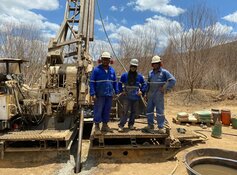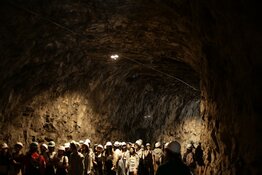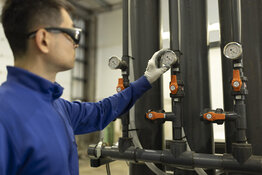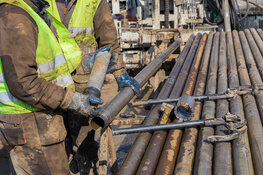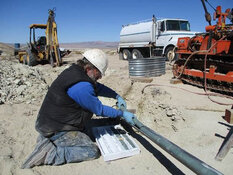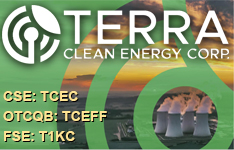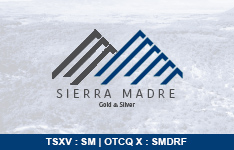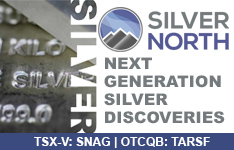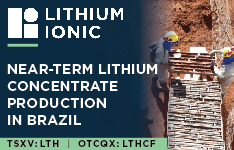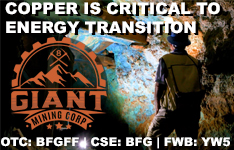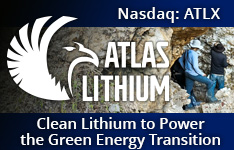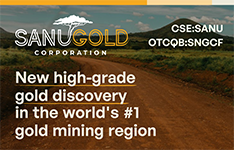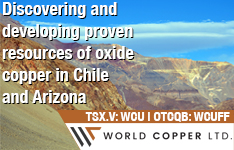American Salars Lithium Inc. (USLI:CSE; USLIF:OTC; Z3P:FWB; A3E2NY:WKN) has positioned itself to strengthen the domestic lithium supply chain in the United States as trade uncertainties continue to shape the industry. With lithium being a critical component for electric vehicles, energy storage, and other clean-energy technologies, the company has expanded its portfolio across multiple jurisdictions, including the United States, Canada, Brazil, and Argentina.
A key part of this strategy is the company's Black Rock South lithium project in Nevada, which serves as a hedge against potential tariffs on lithium imports under a second Trump administration. By securing a U.S.-based lithium asset, the company aims to mitigate risks associated with geopolitical uncertainties and supply chain disruptions. "The lithium market is evolving rapidly, and shifting trade policies could create new challenges," said American Salars Lithium CEO and Director R. Nick Horsley in the company's news release. "By securing strategic lithium assets in key regions of North and South America, we have hedged ourselves geopolitically to meet the growing demand driven by electric vehicles and renewable-energy storage."
American Salars Lithium touted how they have continued to build its asset base in Argentina’s Lithium Triangle, a region known for its high-grade lithium brine deposits. The company owns the 800-hectare Pocitos 1 lithium project and has signed a letter of intent to acquire an additional 13,080 hectares of neighboring land, making it the second-largest property holder on the Salar de Pocitos. Preliminary resource estimates indicate 760,000 tonnes of lithium carbonate equivalent (LCE) at Pocitos 1, though an updated NI 43-101 mineral resource estimate is required before these figures can be relied upon.
Beyond Argentina, American Salars has expanded its presence in Quebec, an emerging hub for hard-rock lithium exploration. The company’s Xenia West and Xenia East projects include 92 mining claims covering 5,382 hectares (54 square kilometers) southeast of Val-d'Or, a region with established mining infrastructure. Other Canadian projects include Lac Simard Nord and Lac Simard Sud, which are located near Sayona Mining’s Tansim project, and the newly announced Leduc East lithium project, which spans 6,100 hectares.
In Brazil, American Salars’ Jaguaribe lithium and rare earth elements project is located in Ceará, a northern coastal state with a history of artisanal lithium, tantalum, and niobium mining. Initial sampling has returned lithium oxide grades of up to 3.72%, alongside rare earth elements such as cesium, tantalum, and niobium. The company’s strategic positioning in Brazil aligns with the growing importance of lithium production within the BRICS economic bloc.
As demand for lithium continues to rise, mergers and acquisitions in the sector have intensified. The company’s presentation highlights major transactions, including Rio Tinto’s planned $6.7 billion acquisition of Arcadium Lithium and Zijin Mining’s $960 million purchase of the 3Q Project from Neo Lithium Corp. These deals reflect ongoing consolidation in the lithium industry, with companies seeking to secure long-term supply sources.
According to Shanghai Metals Markets, lithium prices are projected to recover to an average of US$45,000 per metric ton between 2023 and 2030, aligning with an expected demand surge. As of February 27, 2025, lithium was trading at $10,355.76 per metric ton, according to TradingEconomics.com.
Lithium Market Trends: Supply Tightens as Global Investments Accelerate
As per a February 5 report from Fastmarkets analyzed the lithium market’s supply and demand dynamics, predicting tighter conditions in 2025. The lithium surplus was projected to shrink significantly, from 154,000 tonnes in 2024 to just 10,000 tonnes in 2025, with a potential supply deficit emerging in 2026. Fastmarkets’ head of battery raw material analytics, Paul Lusty, noted that "lithium market conditions—particularly during the latter part of 2024—led to growing producer restraint, both in China and elsewhere." He pointed to production cuts in Australia and China as key factors in balancing the market after prolonged oversupply. However, some analysts remained cautious, citing the ability of certain operations to restart quickly in response to price fluctuations. Fastmarkets also reported that lithium prices had declined sharply in 2024 but showed signs of stabilization entering 2025.
A February 16 report from Cosmos detailed recent advancements in lithium-ion battery technology, specifically improvements in lithium nickel oxide (LiNiO₂) cathodes. Researchers at the University of Texas at Dallas developed a method to reinforce these cathodes with positively charged ions, aiming to reduce cracking and degradation over repeated charge cycles. Dr. Kyeongjae Cho, a professor of materials science and engineering at UTD, stated that strengthening the cathode structure could enhance the commercial viability of lithium nickel oxide batteries. PhD student Matthew Bergschneider noted, "We'll make a small amount at first and refine the process. Then, we will scale up the material synthesis and manufacture hundreds of batteries per week at the BEACONS facility." These advancements have the potential to improve battery performance while reducing dependence on cobalt, a costly and difficult-to-source material used in conventional lithium-ion batteries.
On March 11, a report from Maximize Market Research projected significant growth in the global lithium-ion battery market, driven by demand from EVs and consumer electronics. The market, valued at US$56.12 billion in 2023, was expected to grow at a CAGR of 18.25%, reaching approximately US$181.45 billion by 2030. Asia-Pacific remained the dominant region for lithium-ion battery production, supported by government policies promoting EV adoption. The report also noted increased consolidation in the industry, with key players expanding their global footprints through acquisitions and joint ventures. In the United States, Powin, a battery energy storage system manufacturer, signed a multi-year agreement with EVE Energy to secure a long-term supply of lithium iron phosphate (LFP) battery cells, reflecting the increasing demand for energy storage solutions.
American Salars Lithium Expands Global Footprint with Advancing Exploration Projects
As per its investor presentation, American Salars Lithium is advancing its projects across multiple regions, with ongoing exploration and development activities. In Nevada, the Black Rock South lithium brine project is positioned in a region that hosts several known geothermal resource areas. Soil sampling results have indicated lithium concentrations of up to 180.5 parts per million (ppm), with an average grade of 131 ppm across tested samples. The company is exploring the potential for a lithium brine aquifer at depth, pending further structural geology and geophysics analysis.
In Argentina, the company is conducting environmental studies in preparation for potential production at Pocitos 1. The project has demonstrated significant flow rates, with three drill holes intersecting the aquifer at depths of 365 to 407 meters, recording lithium values of up to 169 ppm. Test results from an Ekosolve pilot plant produced lithium carbonate at a purity of 99.89%, with a recovery rate of 94.9%. The company has also confirmed the continuity of the aquifer through discovery drilling and a 2022 drill program.
In Canada, exploration activities are underway at American Salars’ Quebec lithium projects. The Xenia and Lac Simard properties are situated near established lithium developments, while Leduc East covers historical pegmatite-bearing felspar showings, some of which were operated as feldspar and mica mines in the early 1900s.
The Jaguaribe project in Brazil has also shown early-stage promise, with pegmatite dikes measuring up to 30 meters wide and 300 meters long. Additional sampling is expected to further define lithium and rare earth element potential in the region.
With an experienced management team and a diversified portfolio of lithium assets, American Salars Lithium continues to expand its footprint in the global lithium market. The company’s geographic positioning across North and South America provides exposure to multiple high-potential lithium-producing regions, aligning with the broader industry trend of securing stable supply sources in the face of shifting trade policies.
Third-Party Analysis of American Salars
According to a February 19 report from John Newell & Associates, the lithium market was showing signs of stabilization following a period of oversupply and price declines. The report noted that lithium remained a critical resource for the energy transition, with growing demand from the electric vehicle and energy storage sectors. Newell highlighted that lithium prices had retraced a significant portion of their previous gains but appeared to be forming a base, indicating the potential for a renewed uptrend. He observed that "higher lows are forming, and buyers are stepping in at gradually higher levels, indicating accumulation."
Newell also discussed the importance of diversified lithium assets, particularly in regions with well-established infrastructure and favorable regulatory conditions. He pointed out that lithium exploration and development companies positioned in high-potential regions could benefit from increasing market confidence. The report noted that "as lithium stabilizes and demand surges, investors should watch for breakouts in lithium stocks and key industry players positioning themselves for the next major uptrend."
With global lithium demand projected to increase substantially over the next decade, analysts expected companies with strong asset portfolios and strategic partnerships to play a key role in the sector’s recovery. Newell concluded that, despite recent market challenges, "the recent correction has created a reset opportunity for investors looking to position ahead of the next move higher."
Ownership and Share Structure
 Streetwise Ownership Overview*
Streetwise Ownership Overview*
American Salars Lithium Inc. (USLI:CSE; USLIF:OTC; Z3P:FWB; A3E2NY:WKN)
American Salars said it has 28.8 million shares outstanding and 5.5 million warrants, according to the company.
As for insiders, the CEO Horsley owns about 1.83 million, or about 7.37%, with 4666,666 warrants. Strategic investor Hillcrest Merchant Partners owns 1 million shares or 4.03%. There are no institutional investors, and the rest is retail.
Its market cap is CA$2.01 million. It trades in a 52-week range of CA$0.45 and CA$0.06.
| Want to be the first to know about interesting Cobalt / Lithium / Manganese investment ideas? Sign up to receive the FREE Streetwise Reports' newsletter. | Subscribe |
Important Disclosures:
- American Salars Lithium has a consulting relationship with Street Smart an affiliate of Streetwise Reports. Street Smart Clients pay a monthly consulting fee between US$8,000 and US$20,000.
- As of the date of this article, officers and/or employees of Streetwise Reports LLC (including members of their household) own securities of American Salars Lithium.
- James Guttman wrote this article for Streetwise Reports LLC and provides services to Streetwise Reports as an employee.
- This article does not constitute investment advice and is not a solicitation for any investment. Streetwise Reports does not render general or specific investment advice and the information on Streetwise Reports should not be considered a recommendation to buy or sell any security. Each reader is encouraged to consult with his or her personal financial adviser and perform their own comprehensive investment research. By opening this page, each reader accepts and agrees to Streetwise Reports' terms of use and full legal disclaimer. Streetwise Reports does not endorse or recommend the business, products, services or securities of any company.
For additional disclosures, please click here.


